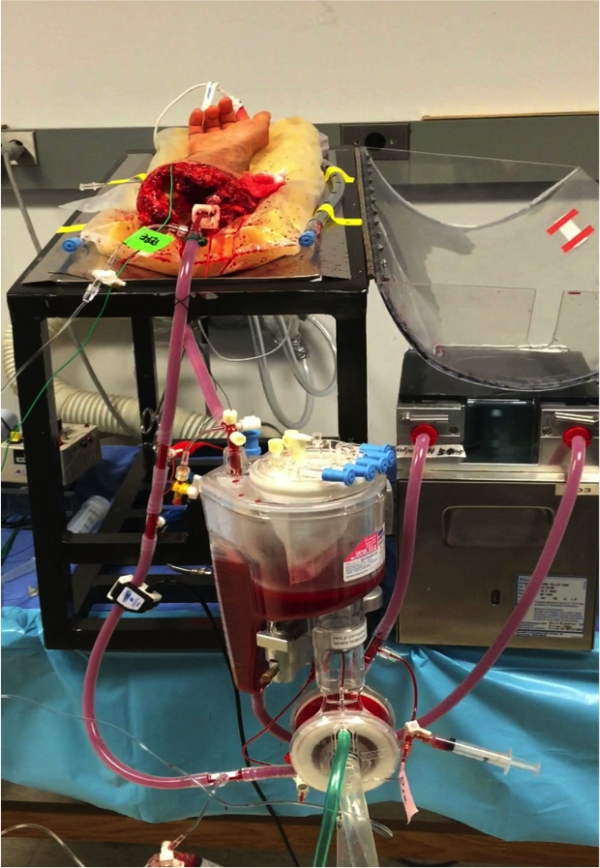Ex Situ Perfusion of a Human Limb for 24 Hours.
1Transplant Surgery, University of Michigan, Ann Arbor, MI
2Gift of Life Michigan, Ann Arbor, MI
3Orthopedic Surgery, University of Michigan, Ann Arbor, MI.
Meeting: 2016 American Transplant Congress
Abstract number: 383
Keywords: Preservation
Session Information
Session Name: Concurrent Session: Clinical Vascularized Composite Allotransplantation
Session Type: Concurrent Session
Date: Tuesday, June 14, 2016
Session Time: 2:30pm-4:00pm
 Presentation Time: 3:42pm-3:54pm
Presentation Time: 3:42pm-3:54pm
Location: Room 102
Background: Vascularized composite tissue (limb) allografts are procured and cold stored (4[deg]C) until surgery. This process is time limited as the tissue has to be revascularized within 4-6 hours to prevent reperfusion injury that compromises neurologic function. The time restraint also imposes a single-center approach and limits the pool of suitable donors. The purpose of this study was to evaluate ex situ perfusion as an alternate technique of preservation for human limb allografts.
Methods: With IRB-approval, a forearm was procured from a 64 year-old brain-dead adult male with no history of vascular disease. Surgery was performed under tourniquet control. Following elbow disarticulation, the brachial artery was cannulated. The limb was flushed with 10,000U heparin and connected to a temperature controlled (30-33[deg]C) ex-situ perfusion system composed of a commercially available roller pump and oxygenator. The perfusate was plasma-based with packed red blood cells added to a concentration of 4-6 g/dL. The circuit was not anticoagulated. Perfusion was performed for 24 hrs; blood gases were performed hourly, compartment pressures and nerve stimulation were performed every 4 hours.
Results: There was 55 min of total ischemia time. Average arterial systolic pressure was 95±6 mmHg. Perfusion flow was 350±52 mL/hr, which was 6-8% of the estimated cardiac output based on donor height and weight. Vascular resistance was 137±50 mmHg/mL/min. Perfusate composition had an average pH of 7.40±0.9, pCO2 41±4 mmHg, pO2 339±46 mmHg, and hemoglobin 4.3±0.5 g/dL. Lactate gradually increased (max of 16.0 mmol/L), while serum potassium remained within a normal range (3.9±1.5 mmol/L). Compartment pressures were 1-5 mmHg. Nerve stimulation remained intact.
Conclusions: A human limb allograft was viable after 24 hours of ex situ perfusion. This approach is a promising modality of preservation with the potential to extend the narrow time frame for revascularization and moving one step closer to hand allograft banking. 
CITATION INFORMATION: Werner N, Alghanem F, Rakestraw S, Nicely B, Olszewksi A, Rudich S, Rojas-Pena A, Magee J, Ozer K. Ex Situ Perfusion of a Human Limb for 24 Hours. Am J Transplant. 2016;16 (suppl 3).
To cite this abstract in AMA style:
Werner N, Alghanem F, Rakestraw S, Nicely B, Olszewksi A, Rudich S, Rojas-Pena A, Magee J, Ozer K. Ex Situ Perfusion of a Human Limb for 24 Hours. [abstract]. Am J Transplant. 2016; 16 (suppl 3). https://atcmeetingabstracts.com/abstract/ex-situ-perfusion-of-a-human-limb-for-24-hours/. Accessed December 19, 2025.« Back to 2016 American Transplant Congress
